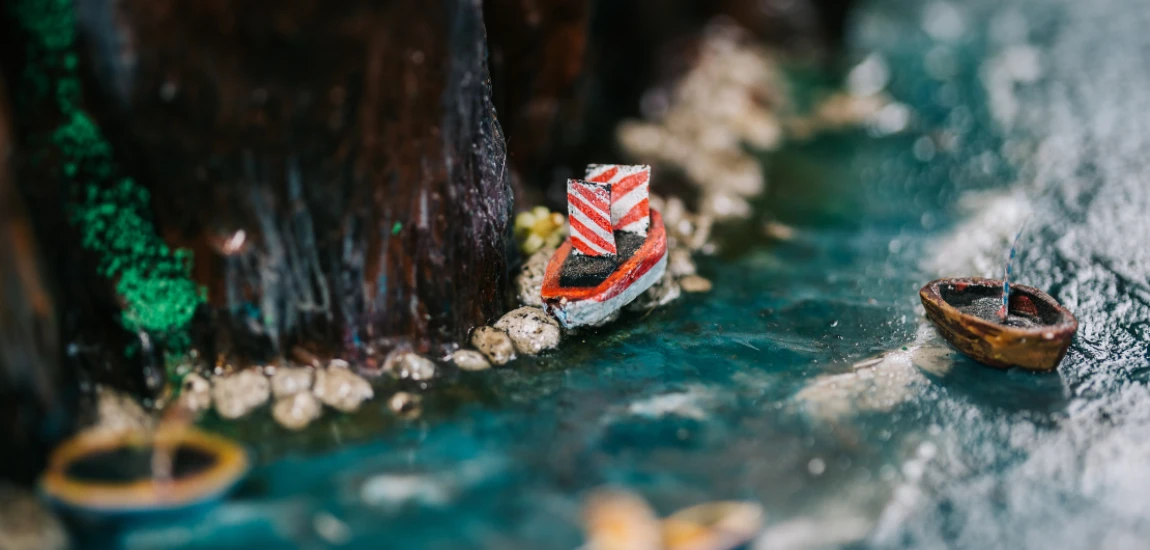Digital Dioramas: How People Curate Their Lives Like Art Installations

Step into any social media feed today, and you’ll notice a common thread: life presented not as it is, but as it’s carefully arranged to look. From color-coordinated Instagram grids to meticulously edited TikToks and even “casual” BeReal updates, people are staging their existence as if their daily routines were art exhibitions. This phenomenon, often described as digital dioramas, is the new way we live online.
A traditional diorama—think of the miniature displays in a museum—presents a carefully arranged scene designed to convey a certain story or mood. Now, our digital lives function much the same way. We don’t just post photos or updates; we build curated installations of our identity. Whether it’s a travel highlight reel, a desk setup “flat lay,” or an aesthetic coffee shot, the goal is not simply to share life, but to design a life worth looking at.
This curated presentation is more than vanity. It’s shaped by the pressures of social media algorithms, the human desire for storytelling, and the need to control how others perceive us. The digital diorama is a performance of identity, where even the most mundane details become part of a larger aesthetic narrative.
But what does this mean for authenticity, self-expression, and human connection? Is curating life online a creative outlet—or a trap of performance and comparison? In this post, we’ll explore how people curate their lives like art installations, why digital dioramas have become the norm, the benefits and risks of living this way, and tips for finding balance in a curated world.
Why People Curate Their Lives Online
The rise of digital dioramas is deeply rooted in psychology and culture. Humans have always curated their identities in some form—through fashion, home décor, or even the way we tell stories about ourselves. Social media simply amplifies this instinct, giving us platforms where identity curation is not only possible but expected.
One of the main drivers is the desire for control. In real life, our identities are messy and sometimes contradictory. Online, however, we can carefully edit what we share, highlighting achievements and minimizing flaws. A digital diorama lets us present the “best version” of ourselves while concealing the parts we’d rather keep private.
There’s also a strong element of storytelling. Humans crave narratives, and a curated feed provides one. A student abroad may post photos that tell the story of adventure and growth, while a new parent may curate content that highlights the beauty (but not the chaos) of family life. These digital stories become symbolic representations of who we are—or who we want others to believe we are.
Curation is also influenced by aesthetic culture. Platforms like Instagram and Pinterest thrive on visual cohesion, encouraging users to think of their feeds like galleries. Even TikTok’s short-form videos have developed unwritten rules around lighting, editing, and tone. Over time, users internalize these norms and unconsciously (or consciously) start arranging their lives to fit them.
And then there’s social validation. Likes, comments, and shares act as feedback loops, rewarding polished, curated content and discouraging raw, unfiltered expression. This creates pressure to keep producing “art installations” of everyday life, even if it doesn’t reflect reality.
Ultimately, people curate their lives online because it provides control, storytelling power, and social recognition. But this curation also has side effects, shaping how we perceive not only ourselves but also each other.

The Aesthetics of Everyday Life
One of the most fascinating aspects of digital dioramas is how they transform the mundane into art. A morning coffee, a desk setup, or a sunset walk—these ordinary experiences are framed, filtered, and stylized until they look like curated exhibits. This aestheticization of everyday life reflects both creativity and cultural pressure.
On the one hand, curating daily life can be an act of artistry. Much like an artist arranging a canvas, individuals choose lighting, composition, and color palettes to craft a specific mood. A travel blogger may design a grid filled with earthy tones to evoke wanderlust, while a lifestyle influencer uses bright pastels to radiate positivity. These choices are intentional, and they turn everyday activities into visual narratives.
On the other hand, the push for aesthetic perfection can feel exhausting. To fit within digital diorama culture, people may feel compelled to buy certain products, visit “Instagrammable” locations, or style their homes according to online trends. This commodifies daily life, transforming it from lived experience into a form of visual content.
This phenomenon also feeds into the curated casual trend. Increasingly, people are posting content that appears spontaneous but is actually highly staged. The messy desk “candid” or the “just woke up like this” selfie is often as curated as a professional photoshoot, blurring the line between authenticity and performance.
The aesthetics of everyday life demonstrate how digital dioramas function both as creative outlets and cultural pressures. They allow individuals to find beauty in routine, but they also risk reducing lived experiences to content pipelines.

The Psychological Impact of Digital Dioramas
Curating life like an art installation has profound psychological effects—both positive and negative.
On the positive side, digital dioramas can act as a form of self-expression. Much like painting or journaling, curating an online presence allows people to explore and project their identities. For some, it can even provide motivation to live more intentionally, finding beauty in everyday details and aligning real life with their digital narrative.
Digital dioramas also foster community and belonging. People with similar aesthetics or curated lifestyles often connect, forming niche online communities around shared interests—whether that’s minimalism, cottagecore, fitness, or productivity. This can help individuals feel seen and validated in ways they might not in their offline environments.
But the downsides are equally significant. Constantly curating life can lead to performance pressure. Instead of living for oneself, individuals may live for the algorithm, arranging their day around what will photograph or record well. Over time, this can erode authenticity and create stress, as life becomes a series of staged moments.
Comparison is another major issue. When everyone is sharing their digital dioramas, it’s easy to feel inadequate. People compare their unfiltered realities to the curated highlights of others, leading to feelings of insecurity, envy, and even depression. This “highlight reel effect” is particularly potent among younger generations, who are growing up in environments where digital curation is normalized.
There’s also the risk of identity fragmentation. When the digital self diverges too far from the real self, individuals may struggle with authenticity and self-worth. Am I the person I post about, or the person I really am? That tension can create confusion and internal conflict.
In short, while digital dioramas can inspire creativity and connection, they also introduce pressures and psychological challenges that must be navigated carefully.

Navigating the World of Digital Dioramas
So how do we live in a culture where digital dioramas are the norm without losing ourselves to performance and pressure? The answer lies in balance, awareness, and intentionality.
For individuals, one strategy is to practice mindful curation. Instead of striving for perfection, focus on sharing content that feels meaningful, even if it’s not “aesthetic.” This might mean posting an unfiltered photo, writing an honest caption, or showing moments that don’t fit neatly into a curated grid. Mindfulness helps ensure that the digital diorama reflects reality rather than replacing it.
Another tip is to set boundaries with social media consumption. Constant exposure to curated feeds can distort perceptions of reality, so limiting screen time or diversifying platforms can reduce comparison. Following accounts that prioritize authenticity over perfection can also shift the digital environment toward healthier norms.
For creators and influencers, transparency is key. Acknowledging the curated nature of content—whether by showing behind-the-scenes moments or discussing the effort behind a “casual” post—helps demystify digital dioramas and build trust with audiences.
Finally, platforms and communities play a role. Social media companies can prioritize features that encourage authentic sharing rather than algorithmic perfection. For example, BeReal’s popularity demonstrates that there’s a desire for less-curated content. Communities can also encourage honesty and vulnerability, making space for digital dioramas that celebrate imperfection as much as perfection.
By approaching digital dioramas with intentionality, individuals can harness the creative and connective power of curation without succumbing to its pitfalls.




